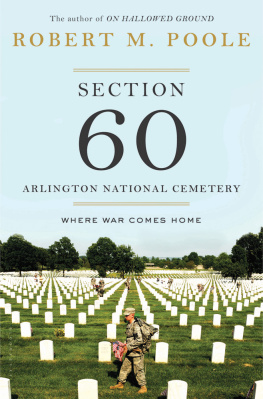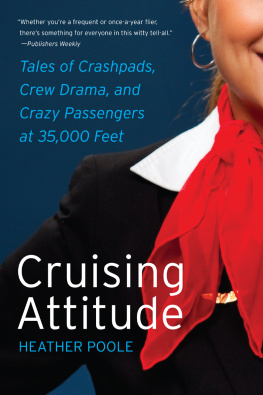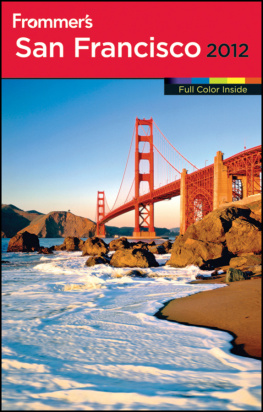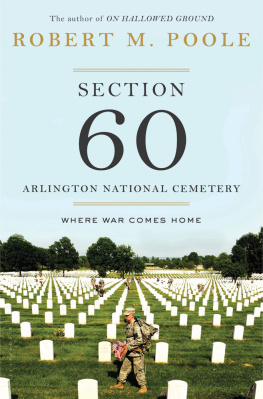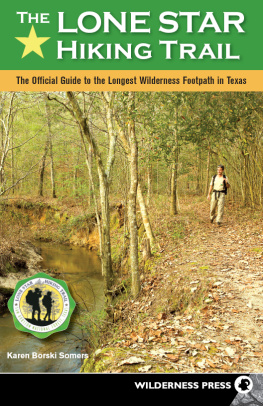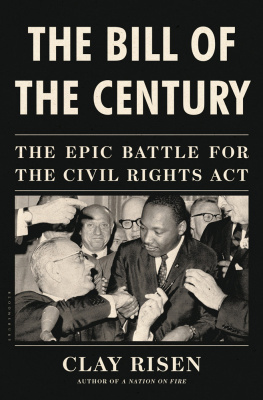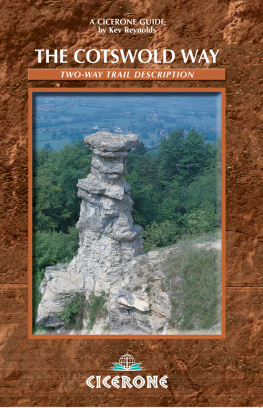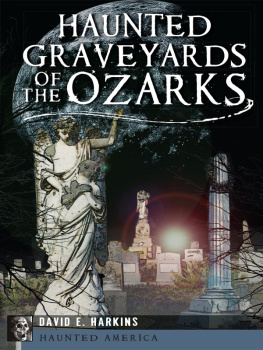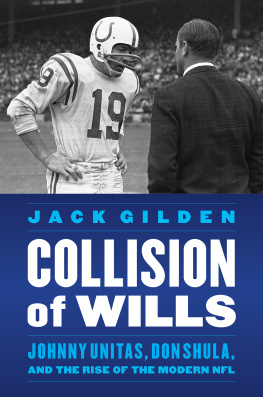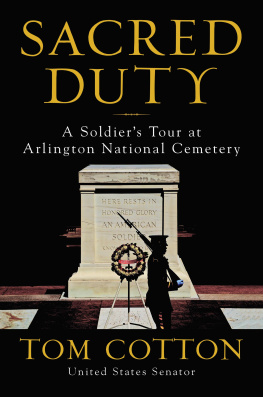I have been wandering among the tombstones in Section for several years, attending services for men and women killed in Iraq and Afghanistan, speaking with comrades who served with them, and passing time with surviving friends and family who come to this part of Arlington to honor loved ones claimed by the nations longest war. It is also a place of rest for combatants recently repatriated from World War II, Korea, and Vietnam.
I am most grateful to survivors who generously shared their time in Section and to those who exchanged views by e-mail or telephone: Jack and Ann Adams; Rafael and Xiomara Anderson; Joseph Baddick; Regina Barnhurst; Beth Belle; Anthony and Mary Coyer; Paula Davis; Tristan Gale; Becky, Kevin, and Justin Hall; David V. Hill; Tom Heinlein; Jesse Hernandez; Brittany Jacobs; Marine Maj. Jason Johnston; John and Mary Jane Jones; Chaz Kane; Marine Lance Cpl. Brandon Long; Katie Madden; Jim, Brandy, and Alison Malachowski; Chase Martin; Judy Meikle; Yolanda Mercado; Liz, Hayley, and Michael Mocabee; Army Staff Sgt. Christian Mullins; Ami Neiberger-Miller; Marine Sgt. Tim Nunez; Richard and Tammy OBrien; Glenn Oliver; Sheryl M. Schneider; David Sharrett; Jill Stephenson; Laura Swink; Carol Ward Thomas; Jean and Hugh Thomason; Susan Ripke; Joe and Rita Rippetoe; Colleen Shine; Army Capt. Chad E. Thibodeau; Thomas Whorl; Vicki Zeigler; and Sue and Megan Zerbe.
The men and women of the Third Infantry Regiment of the Army, better known as the Old Guard, are closely associated with services at Arlington, where they drive the caissons, carry the caskets, fire the salutes, and do so many things to make an Arlington funeral a memorable event. Special thanks to my friend First Sgt. Robert A. Durbin, who served with the elite Honor Guard Company and eased my path with Old Guard soldiers. They generously allowed me to interview them, watch them train, and join them for missions in the cemetery. I am grateful to Lt. James G. Bordelon; Sergeant Maj. Phillip R. Cantrell; Staff Sgt. Michael C. Drake; Maj. Russell H. Fox, Staff Sgt. Adam Eisenhauer; Staff Sgt. T. J. Goodman; Maj. John G. Miller; Staff Sgt. John McDermott; Col. James C. Markert; and Staff Sgt. William Whitley.
The Marines were welcoming and helpful, inviting me to their Washington, D.C., barracks at Eighth and I Streets for training and interviews, as well as their impressive sunset parades. Special thanks to Master Sgt. Christopher D. Albright, former funeral director for the Marine Corps; Capt. John D. Norton; Cpl. Brian Bell; Capt. Eric D. Flanagan; Lance Cpl. Ruben Franco; Cpl. James Hamby; Lance Cpl. Gary Miller; and Capt. Greg Wolf.
From the Air Force, heartfelt thanks to Jean Anderegg, chairwoman of the Air Force Arlington Ladies Committee; Staff Sgt. Alfredo Caballero; Airman First Class Krystal Chase; Col. Charles R. Cornelisse; Technical Sgt. Jennifer A. Lindsay; Lt. Col. Pamela Novy; Lt. Col. Elizabeth A. Ortiz; Staff Sgt. Jennifer Powell; and Capt. Christian L. Williams. I am especially grateful to Maj. Ryan VanVellen, a helicopter pilot and Iraq War veteran who now heads operations for the Air Force Honor Guard at Bolling Air Force Base.
Ed Zeigler, chief of the Navys public information office in Washington, eased my way with Navy contacts. Lt. Jonathan Bush, who has presided as chaplain for hundreds of Marine and Navy funerals in recent years, spent a good bit of time answering questions and walking through Section with me. I am also grateful to Cdr. Kirk S. Lippold, skipper of the USS Cole when Al Qaeda launched one of its first attacks on the United States.
From the Armys Center of Military History, I am grateful to Roderick Gainer, Stephen A. Carney, and Richard Moore, all intimately familiar with the historical importance of the artifacts friends and families leave in Section .
All the armed forces cooperated with my research, but my conclusions in no way reflect the official policies of the Army, Air Force, Marines, Navy, or Coast Guard. Any errors are mine alone.
In addition to those mentioned above, I thank Bonnie Carroll, founder and president of the Tragedy Assistance Program for Survivors (TAPS); friend and scholar Terrence M. Doyle; Darcie Sims; and Holly Holman, each of whom contributed in some way to this project.
Thanks to Bruce Dale, a former National Geographic colleague who produced the remarkable infrared images of Section 60 for this book. Readers wishing to see more can find themand buy printsat his website: bruce@brucedale.com.
This book would not have been possible without the enthusiasm and support of Gillian MacKenzie, my friend and literary agent. She found a home for Section at Bloomsbury, where I am happy to be in the hands of the brilliant George Gibson, publishing director, and Jacqueline Johnson, an editor whose patience, grace, and steady judgment brought this book into print. Thanks also to Laura Phillips and Janet Biehl.
Finally, thanks and much love to my wife, Suzie, who keeps our ship moving forward.
Some readers may recall one of the worst episodes in the history of Arlington National Cemetery, which came to light in 2009 . Over a number of years, more than two hundred graves were misidentified or improperly marked, cremated remains were mishandled, and record keeping haphazard. The cemeterys management was replaced, congressional investigations launched, and new systems put in place to avoid such problems in the future.
Investigators found no evidence of mismanagement in Section , but the news caused at least two concerned families to have their sons exhumed from Arlington and positively identified to make sure they were buried in the right place. Both were, and the men were reinterred.
In response to the trauma of misplaced graves, the Department of the Army, which runs the cemetery, thoroughly mapped each of Arlingtons , burials and entered the information into a database that allows administrators to locate every grave within seconds. Visitors can also use the database to find graves by name, using the free ANC Explorer application from Arlingtons official website, http://www.arlingtoncemetery.mil.
Seventy soldiers from the Armys Old Guard at Fort Myer were pressed into service for the three-month mapping operation, which began in June 2011 and ended in August. Named Task Force Christman, in honor of Pvt. William Christman, Arlingtons first military burial from the Civil War, the soldiers assigned to the project photographed the front and back of every grave with iPhones and tagged each image with GPS coordinates. Soldiers checked to make sure the names on the tombstones matched cemetery records and reported any discrepancies to Arlingtons civilian administrators.
We did the whole thing at night, said Staff Sgt. John McDermott of Delta Company, Third U.S. Infantry Regiment, to avoid the heat and to make sure we didnt interfere with funerals. We also knew that wed be able to work more efficiently without interruptions from tourists and visitors curious about what was going on. So we operated after hours, from 1700 hours [five p.m. ] until 0600 or 0700 , until we got it done. A few soldiers found the idea of stalking the cemetery at night to be a bit creepy, which prompted more than a few ghost stories. One soldier, photographing a grave, felt someone tap him on the shoulder, turned around, and found nobody there; others heard voices and saw ghostly figures moving among the graves.
Such episodes were shrugged off by McDermott and another noncommissioned officer from Delta Company, Staff Sgt. Michael Drake, who attributed the sightings to overactive imaginations. We knew wed get stories like that, working at night, said Drake, but everyone came through the experience all right.
He grieves, he weeps, but then his tears are through.
The Fates have given mortals hearts that can endure.
Homer , The Iliad , translated by Robert Fagles
Next page
